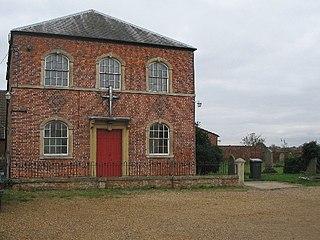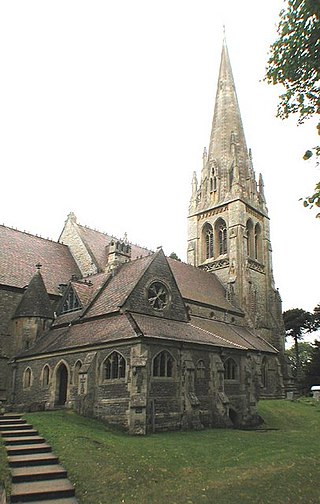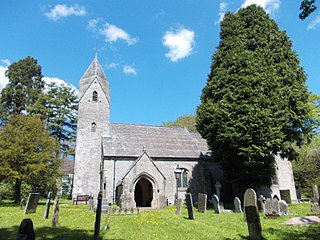
Donhead St Mary is a village and civil parish in southwest Wiltshire, England, on the county border with Dorset. The village lies about 2+1⁄2 miles (4.0 km) east of the Dorset town of Shaftesbury and stands on high ground above the River Nadder, which rises in the parish.

Southwick is a semi-rural village and civil parish 3 miles (4.8 km) south-west of the county town of Trowbridge, Wiltshire, England. It is separated from the south-west fringe of Trowbridge only by the Southwick Country Park, which consists of 380 acres (150 ha) of open fields. The majority of the village lies south of the A361, which runs through the village, linking Trowbridge with Frome.
Samuel Sanders Teulon was an English Gothic Revival architect, noted for his use of polychrome brickwork and the complex planning of his buildings.

Henry Woodyer (1816–1896) was an English architect, a pupil of William Butterfield and a disciple of A. W. N. Pugin and the Ecclesiologists.

Tisman's Common is a hamlet in the Horsham District of West Sussex, England. It stands in the parish of Rudgwick, on the Rudgwick to Loxwood road, 6.4 miles (10.2 km) west of Horsham.

St John the Baptist Church is located to the northeast of the village of Tunstall, Lancashire, England. It is an active Anglican parish church in the united benefice of East Lonsdale, in the deanery of Tunstall, the archdeaconry of Lancaster and the diocese of Blackburn. The benefice of East Lonsdale combines this church with St Peter, Leck, St Wilfrid, Melling, St James the Less, Tatham, The Good Shepherd, Lowgill, and Holy Trinity, Wray. The church is recorded in the National Heritage List for England as a designated Grade I listed building. Services are usually at 11:00 on 2nd & 4th Sundays, in rota with the sister church at Leck.

Chapel-en-le-Frith is a town and civil parish in the Borough of High Peak in Derbyshire, England.

St Margaret's Church, Wormhill is a Grade II* listed parish church in the Church of England in Wormhill, Derbyshire.
Tunstall is a civil parish in Lancaster, Lancashire, England. It contains eight listed buildings that are recorded in the National Heritage List for England. Of these, one is listed at Grade I, the highest of the three grades, and the others are at Grade II, the lowest grade. The parish contains the village of Tunstall, and is otherwise rural. The listed buildings consist of houses, a church, a sundial base, and a milestone.

St John the Baptist Church is a Grade II* listed parish church in the Church of England in Buxton, Derbyshire.
Buxton is a spa town in the High Peak district of Derbyshire, England. The town contains 93 listed buildings that are recorded in the National Heritage List for England. Of these, one is listed at Grade I, the highest of the three grades, seven are at Grade II*, the middle grade, and the others are at Grade II, the lowest grade. That the town was a source of natural water springs has been known at least since Roman times, and during the medieval period, St Ann's Well was a shrine and a place of pilgrimage. Buxton developed into a spa town during the 18th and 19th centuries, largely under the influence of the Dukes of Devonshire. The water was considered to have curative powers, and this led to the building of bath houses and later a hospital. Later, leisure facilities grew, and were served by the Pavilion Gardens, and the building of a conservatory, a theatre, a concert hall, and an opera house.









